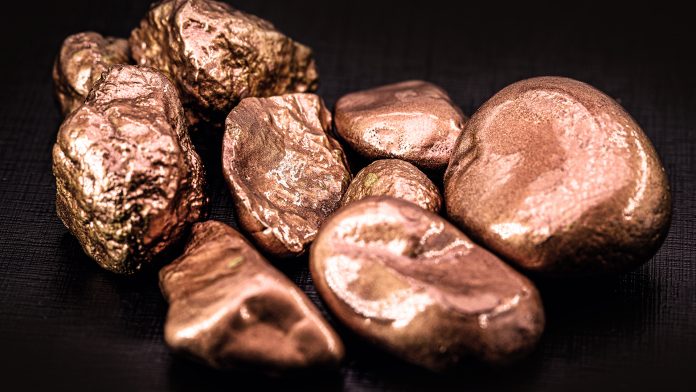Redstone Resources tells us about the latest developments and discoveries at its West Musgrave Project which includes a potentially significant copper resource.
Redstone Resources (ASX:RDS) is a base and precious metals exploration company headquartered in Perth, Western Australia (WA). Its key focus is advancing its 100% owned West Musgrave Project in WA, which hosts the emerging Tollu copper deposit.
West Musgrave is Redstone’s flagship asset, located in a Tier-1 mining jurisdiction only 40km east of BHP’s world‐class Nebo‐Babel Ni‐Cu‐Co‐PGE deposit in the prolific West Musgrave Province of Western Australia.
The latest results from drilling validate that Redstone is on the right path to unlocking a significant copper (Cu) resource. A truly exciting intersection of 1m at 18.5% Cu from 18m (8m at 4.1% Cu) was recorded from recently completed reverse circulation (RC)drilling. This highlights the clear potential for Tollu to deliver a high-grade copper resource from shallower depths.
In addition to the copper potential, Redstone’s 2022 drilling programme confirmed the presence of mafic-ultramafic rocks at the West Musgrave Project for the first time. This is significant as these rocks are a potential source of nickel (Ni), copper, cobalt (Co), or platinum group element (PGE) mineralisation. These are similar to those found at the nearby Nebo-Babel deposit, estimated to have a resource of 390 million tonnes grading 0.33% copper and 0.30% nickel, for 1.2 million tonnes of contained nickel metal and 1.3 million tonnes of contained copper metal (Mea + Ind + Inf – 2012 JORC).
Despite recent exploration success, Redstone’s West Musgrave Project remains largely underexplored, with limited exploration undertaken beyond the high-grade Tollu copper deposit. This makes the recent discovery of the mafic-ultramafic target rocks even more significant as it confirms the potential for Ni-Cu-PGE ± Co mineralisation and perhaps an explanation for a high-grade Cu source at Tollu.
As the global decarbonisation and electrification transition accelerates, so too does demand for crucial base metals – namely copper and nickel.
Copper, in particular, is forecast to face a considerable supply crunch in the near term as recently described in 2022 by Nicholas Snowdon, a Metals Strategist at Goldman Sachs (quoted by the AFR): “The sequential increase in policy targets and commitments to green transition, alongside a minimal supply response so far…have resulted in earlier and larger open-ended deficit conditions that essentially are already here, not beginning at some point in the future.”
Redstone has set the foundations for further exploration success, starting with a solid maiden JORC resource at Tollu, which the company expects to grow with further drilling. This puts the company in an excellent position to leverage the tightening market conditions for base metals.
The West Musgrave Project, which includes the Tollu Copper Vein deposit, has the ideal geological and structural setting for large magmatic Ni‐Cu sulphide deposits.
High-quality assets in the right location
Covering 210km2, Redstone’s West Musgrave Project includes the Tollu Copper Vein deposit which hosts a giant swarm of hydrothermal copper-rich veins in a mineralised system, covering at least 5km2. Copper mineralisation is exposed at the surface and forms part of a dilation system within and between two major shears.
Redstone has built an excellent foundation for future growth, delivering an initial JORC 2012 resource at Tollu of 3.8m tonnes at 1% Cu. It contains 38,000 tonnes of copper, and 0.01% cobalt, which equates to 535 tonnes of contained cobalt.
Australia’s Musgrave province contains a Mesoproterozoic crystalline basement terrain that reaches across the shared borders of Western Australia, the Northern Territory and South Australia. The terrain has significant deposits of several essential metals, including nickel, platinum group elements, copper, gold, lead, zinc, chromite, rare earth elements (REEs) and more. Yet, much of Musgrave remains underexplored, especially for the base metals the world now needs.
Geological interpretation of Redstone’s tenure suggests that the West Musgrave Project may have volcanic hosted massive sulphide (VHMS) deposits. These comprise large continental type molybdenum (Mo)‐porphyry deposits, strata‐bound gold (Au)‐ silver (Ag) deposits, tin (Sn) – tungsten (W) mineralisation related to granites, granite stockworks or greissens, intrusion-related polymetallic veining and intrusion related gold (IRG) deposits.
Redstone also has other pending tenement applications prospective for nickel and copper resources in the same region.
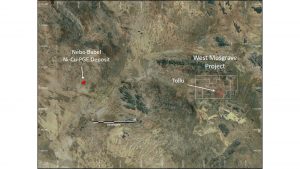
Recent exploration success delivers high-grade copper resource
Recent RC drilling has extended the high-grade copper lens zone at the Forio Prospect within the Tollu deposit. Significantly, drill hole TLC203 delivered the highest copper grade ever to be encountered at the West Musgrave Project measuring 1m at 18.5% Cu from only 18m downhole.
“The 18.5% (for 1m) copper grade result in the latest assay results is an outstanding outcome, together with the other results reported here. The Project is shaping up to be potentially significant.
“It is clear that the potential copper endowment is high. Redstone is excited about the future prospects of its tenure and our ability to unlock further high-grade copper mineralisation with future drilling,” said Redstone Chairman Richard Homsany
Additional highlights from this drilling programme include:
- Geochemical assays from the most recent RC drilling campaign confirm further significant high-grade copper mineralisation intersections at Forio;
- The significant high-grade Forio copper intersections from the most recent RC campaign
include: -8m at 4.1% Cu from 13m downhole depth in drill hole TLC203, including 1m at 18.5% Cu from 18m downhole; -4m at 1.2% Cu from 45m downhole in drill hole TLC203; and -6m at 1.47% Cu from 80m downhole in drill hole TLC201. - The high-grade copper intersections in drill holes TLC201 and TLC203 extend Forio’s high-grade copper mineralisation zone to a 60m strike length (north and south) of continuous high-grade copper.
Three of the RC drill holes completed in the late 2022 RC drilling campaign at Tollu tested the continuity along the strike of a zone of high-grade copper lenses at Forio identified in previous drilling. This high-grade copper zone was first targeted because of visible malachite (Cu carbonate in the oxide zone) in an isolated quartz vein outcrop at the surface.
Importantly, the high-grade copper intersections in holes TLC201 and TLC203 extend the zone of high-grade copper lenses at Forio along strike north and south for at least 60m.
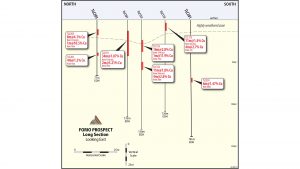
Drilling at Forio has proven the potential for extremely high grades of copper resources within the mineralised lenses, such as the 1m at 18.5% Cu from 18m downhole in TLC203 and 1m at 11.9% Cu from 31m downhole in TLC153.
Similar high grades and thicknesses have also been intersected from the surface at the Tollu Chatsworth Prospect, where copper mineralisation has been intersected near the surface and as deep as 424m downhole, where grades of 3.73% Cu over 10m remain open (TLC80).
Some of the stunning high-grade copper intersections delivered from Chatsworth
include:
- 10m at 2.51% Cu from 174m downhole (TLC188) including 3m at 4.71% Cu from 175m downhole;
• 26m at 1.46% Cu from 61m downhole (TLC189) including 1m at 5.1% Cu from 84m downhole;
• 16m at 2.88% Cu from 74m downhole (TLC190) including 9m at 4.6% Cu from 76m downhole, which includes 2m at 7.62% Cu from 76m downhole;
• 22m at 1.26% Cu from 104m downhole (TLC190) including 3m at 3.67% Cu from 122m downhole; and
• 25m at 1.10% Cu from 53m downhole (TLC192) including 7m at 2.64% Cu from 60m downhole.
The Chatsworth drilling has extended the vertical continuity of the copper mineralisation in some of the historical drill holes, with at least some 100m of vertical extent and open at depth and towards the surface.
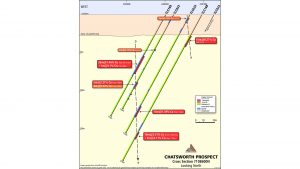
Mafic-ultramafic nickel source rock potential confirmed
In addition to the high-quality copper resources, geochemical analysis of the latest RC drilling also confirmed the presence of mafic-ultramafic nickel source target rocks at West Musgrave.
This is the first time potential Ni-Cu-Co-PGE host or source rocks have been intersected on the Project, which is significant considering the western boundary of the project area is only 40km east of BHP’s (ASX: BHP) Nebo Babel Ni-Cu-Co-PGE deposit.
Analysis of geochemistry returned from RC drilling completed in late 2022 showed that drill holes TLC183 and TLC196 have intersected a Hi-Mg mafic-ultramafic intrusion with elevated Ni and Cr at the West Cigar Magnetic Target, some 7.5km NE of the Tollu Cu Deposit.
The intrusion was intersected from just beneath the surface cover at approximately 5m downhole (in both TLC183 and TLC196) to approximately 83m downhole (in TLC196).
Importantly, the geochemistry suggests that the base of the intrusion could be classified as Gabbro-Norite, however further mineralogical analysis will be required to confirm this.
To provide further perspective, mafic-ultramafic intrusions with associated Gabbro-Norite rocks are some of the main host rocks affiliated with major Ni-Cu-PGE +- Co deposits around the world, including IGO’s (ASX: IGO) Nova-Bollinger Deposit in the Fraser Range, some 900km to the southwest, the giant Jinchuan Ni-Cu-(PGE) deposit in China, the large Kabanga Deposit in Tanzania, and the Voiseys Bay Deposit in Canada.
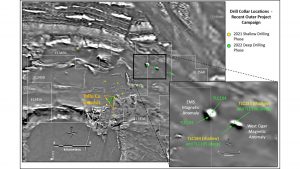
A clear pathway to copper discovery
Looking at the remainder of 2023, Redstone has a clear strategy to continue systematically advancing the West Musgrave Project, led by further RC drilling across key targets. Redstone expects further drilling will increase the mineralised area, and the volume of hydrothermal mineralisation, within the current JORC resource at Tollu. Since 2015, most of the drilling intersections of copper mineralisation at both Chatsworth and Forio, including the 60m long, 86m deep (downhole) and up to 34m thick high-grade Forio copper lens zone, have yet to be included in the existing JORC 2012 resource estimation of the Tollu Copper deposit, which points to the considerable upside that can be unlocked by further drilling.
In addition to advancing West Musgrave, Redstone continues to diligently assess new project opportunities, both in Australia and internationally, that will complement the company’s current portfolio and increase exposure to the growing global battery minerals markets.
Our management team
Redstone is led by a management team with expertise in geology and mineral exploration, business development and corporate law, creating confidence in the team’s ability to capitalise on its assets.
Richard Homsany – Chairman
Richard Homsany is Executive Vice-President of Mega Uranium Ltd, a Toronto Stock Exchange-listed company, and Executive Chairman of Toro Energy Limited, an ASX-listed uranium company. He is also the Non-Executive Chairman of Galan Lithium Ltd (ASX: GLN) and the Health Insurance Fund of Australia Limited, and is a Non-Executive Director of Brookside Energy Ltd (ASX: BRK).
Homsany was previously a Corporate and Commercial Advisory Partner with one of Australia’s leading law firms. He is currently the Principal of Cardinals Lawyers and Consultants and has been admitted as a solicitor for over 20 years. Homsany has extensive experience in corporate law, including advising public resources and energy companies on corporate governance, finance, capital raisings, takeovers, mergers, acquisitions, joint ventures, and divestments.
Homsany is a certified practising accountant and is a fellow of the Financial Services Institute of Australasia (FINSIA). He has a commerce degree and an honours degree in law from the University of Western Australia and a graduate diploma in finance and investment from FINSIA.
Brett Hodgins – Non-Executive Director
Brett Hodgins has over 20 years of professional experience in the resources sector, primarily focused on exploration and mining operations. He began his career as a geologist with Robe River Mining and Rio Tinto Iron Ore. During that time, he was involved with the commissioning and development of the West Angelas and Hope Downs operations. He brings a wide range of experience in exploration, feasibility studies, and operations, and has a broad knowledge of the resource sector.
Edward van Heemst – Non-Executive Director
Edward van Heemst is a prominent Perth businessman with over 40 years of experience in the management of a diverse range of activities with large private companies. He is the Managing Director of Vanguard Press and was previously the long-time Chairman of Perth Racing (1997 to 2016). He was also appointed as Non-Executive Chairman of NTM Gold Ltd, an ASX-listed company, from July 2019 to March 2021.
Dr Greg Shirtliff – Lead Geologist – Consultant
Dr Greg Shirtliff has over 20 years of experience in industry-related geology and geochemistry, including a PhD in mine-related geology from the Australian National University. Shirtliff has held various roles in the mining and exploration industry ranging from environmental, mine geology, resource development, exploration and management roles, exploration, and technical projects inclusive of engineering and metallurgical. Shirtliff has had recent exploration success at Toro Energy, discovering multiple zones of massive Ni-sulphide mineralisation along the Dusty Komatiite, arguably the first massive Ni-sulphide mineralisation discovered in the Yandal Greenstone Belt in Western Australia.
Please note, this article will also appear in the fourteenth edition of our quarterly publication.

